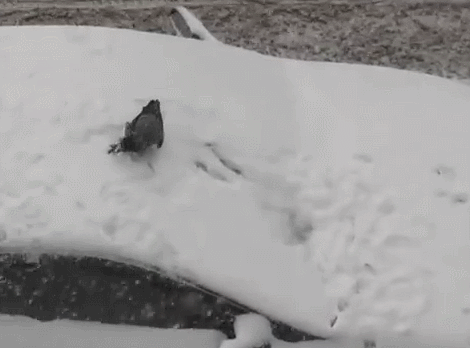Played-in
- Tiz Creel
- Mar 10
- 3 min read
Updated: Sep 29

What can play teach us about ourselves and the world around us?
Play is more than mere entertainment—it is a powerful tool for understanding, adaptation, and exploration. Across the natural world, play has been observed countless times, manifesting in fascinating ways:



Play is an evolutionary mechanism for relief, curiosity, exploration, experimentation, discovery, and most importantly, connection. New perspectives are emerging around the idea that play—as a concept, a design tool, and an experience— is vital in understanding ourselves and the world around us. Play shapes our minds, expands our knowledge, and influences culture. As fundamental as it is misunderstood, we are only scratching the surface of what play can do for us.
In the human world, play has led to extraordinary outcomes. Gamers have solved complex protein-folding puzzles that stumped researchers for decades (Koepnick et al., 2019; Bohannon, 2010). Research suggests that playing Tetris shortly after experiencing a traumatic event may reduce the likelihood of developing post-traumatic stress disorder (PTSD) (Butler et al., 2020; Iyadurai et al., 2018). Meanwhile, studies on doll play reveal its role in empathy and social understanding in children (Hashmi et al., 2022; Gerson et al., 2024). In larps (live-action role play), adults around the world embody characters and navigate fictional scenarios, sometimes grappling with ethical dilemmas, challenging interpersonal dynamics, and facing uncomfortable situations that reflect real-life complexities. As a relatively new playform, larp has evolved an intricate and unique culture of care, collaboration, and trust (Losilla, 2024; Vejdemo, 2018).
Play can transform how we engage with the world and each other. It inspires us to cooperate, embrace uncertainty, create new worlds, and develop a sense of individual and collective identity —these qualities are increasingly critical in today's unpredictable world. Play has multiple practical applications and benefits; most importantly, it helps us pursue a higher interest in the things around us. When we play, we engage fully with life and its dimensions to reach the most profound truths in ordinary things. Play is not just an escape from reality; it is a speculative tool for reimagining the future, shaping culture, and revealing new truths. New truths can arise through a dialectic between play and reality—playing is a way to meet the world.
In-depth:
References
Auersperg, A. M. I., Kacelnik, A., & von Bayern, A. M. P. (2020). A new problem-solving task in a highly explorative parrot: The object-choice test with cover. PLOS ONE, 15(6), e0234262. https://doi.org/10.1371/journal.pone.0234262
Emery, N. (2012, June 28). Crow playmates. Psychology Today. https://www.psychologytoday.com/ca/blog/avian-einsteins/201206/crow-playmates
Emery, N. (2012, May 30). Corvid tool use, play, and more. Psychology Today. https://www.psychologytoday.com/ca/blog/avian-einsteins/201205/corvid-tool-use-play-and-more
Dukehart, C. (2014, December 5). Surfing seals catch a wave in South Africa. National Geographic. https://www.nationalgeographic.com/photography/article/surfing-seals-catch-a-wave-in-south-africa
Iyadurai, L., Blackwell, S. E., Meiser-Stedman, R., Watson, P. C., Bonsall, M. B., Geddes, J. R., Nobre, A. C., & Holmes, E. A. (2018). Preventing intrusive memories after trauma via a brief intervention involving Tetris computer game play in the emergency department: a proof-of-concept randomised controlled trial. Molecular psychiatry, 23(3), 674–682. https://doi.org/10.1038/mp.2017.23
Butler, O., Herr, K., Willmund, G., Gallinat, J., Kühn, S., & Zimmermann, P. (2020). Trauma, treatment and Tetris: video gaming increases hippocampal volume in male patients with combat-related post-traumatic stress disorder. Journal of psychiatry & neuroscience : JPN, 45(4), 279–287. https://doi.org/10.1503/jpn.190027
Koepnick, B., Flatten, J., Husain, T. et al. (2019). De novo protein design by citizen scientists. Nature, 575, 184–188. https://doi.org/10.1038/s41586-019-1274-4
Bohannon, J. (2010, August 4). Video game helps solve protein structures. Science. Retrieved January 31, 2025, from https://www.science.org/content/article/video-game-helps-solve-protein-structures
Gerson, S., Keating, J., Hashmi, S., et al. (2024). Doll play improves social processing: Evidence from a randomised-control trial. Research Square. https://doi.org/10.21203/rs.3.rs-4794246/v1
Hashmi, S., Vanderwert, R. E., Paine, A. L., & Gerson, S. A. (2022). Doll play prompts social thinking and social talking: Representations of the internal state language in the brain. Developmental Science, 25, e13163. https://doi.org/10.1111/desc.13163
Losilla, S. (2024, June 11). Rules, trust, and care: The Nordic larper's risk management toolkit. Nordic Larp. https://nordiclarp.org/2024/06/11/rules-trust-and-care-the-nordic-larpers-risk-management-toolkit/
Vejdemo, S. (2018, February 21). Play to lift, not just to lose. Nordic Larp. https://nordiclarp.org/2018/02/21/play-lift-not-just-lose/
Zimmerman, Eric. (2014). "Manifesto for a Ludic Century." In Steffen P. Walz & Sebastian Deterding (Eds.), The Gameful World: Approaches, Issues, Applications. The MIT Press.
Tiz Creel of Living Things Studio ©2025
Thank you for reading 🫀
Keep it playful.



Comments